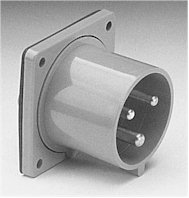As implied in your post, the situation is confused, confusing and certainly inconsistent.And before you know it we'll be into the discussion of what is a plug, and what is a socket.
Tradiionally, I always called anything 'mounted' a socket and anything 'trailing' (attached to a cable) a plug, and then qualified with 'male' and 'female' as necessary (the default being male plug and female socket, for which I generally didn't bother to specify gender). However, I will now talk of 'trailing sockets' or 'line sockets' (and used to call lampholders 'light sockets') - so I, for one, am certainly not consistent.
I'm sure you'll hear all sorts of personal views about this, but I wonder whether there are any official pronouncements or Standards relating to this matter?
Kind Regards, John.



